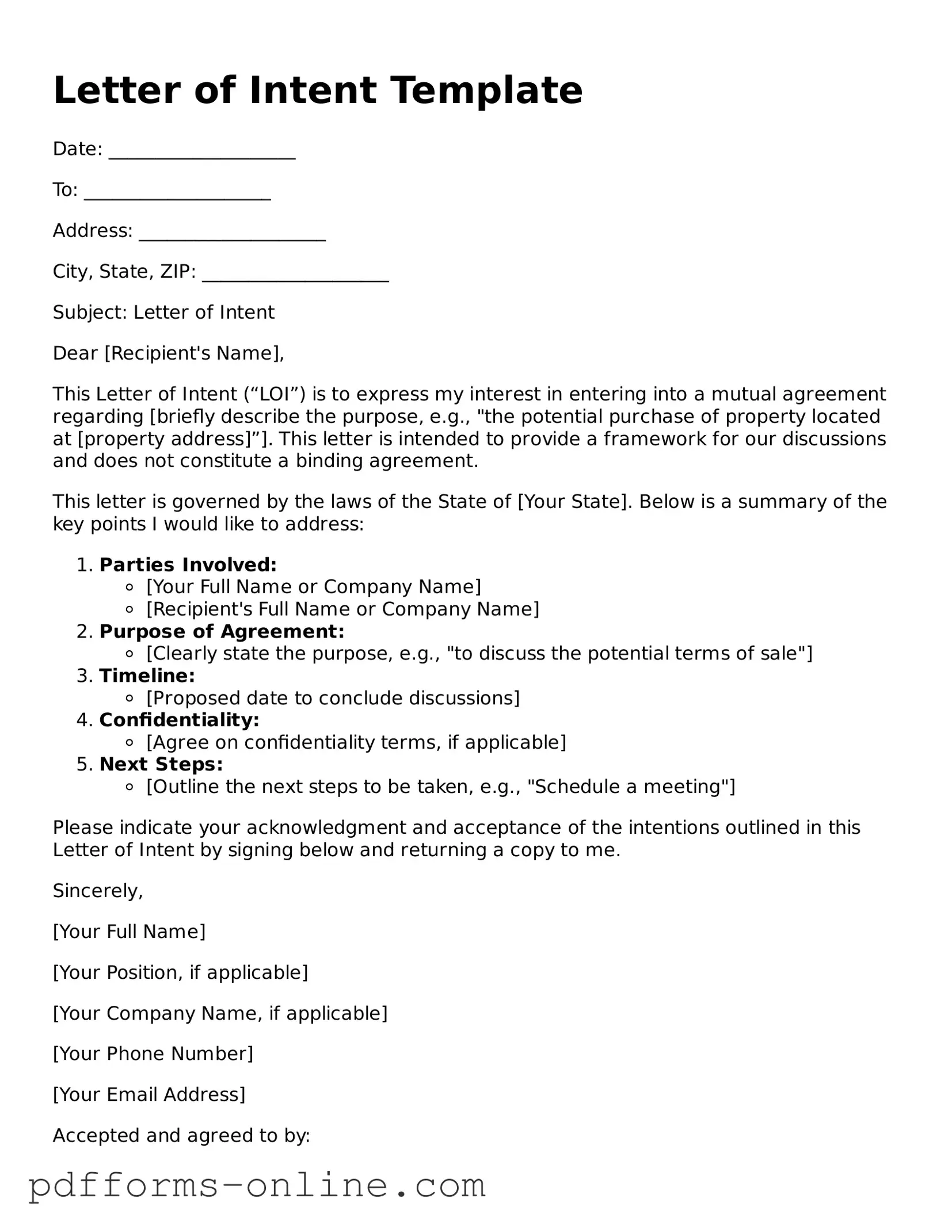A Memorandum of Understanding (MOU) serves a similar purpose to a Letter of Intent. Both documents outline the intentions of the parties involved and establish a framework for future agreements. An MOU is often less formal and does not necessarily create binding obligations, allowing parties to clarify their goals and expectations without the pressure of a legally enforceable contract.
A Term Sheet is another document that resembles a Letter of Intent. It summarizes the key terms and conditions of a proposed agreement. Term Sheets are typically used in business transactions and negotiations. They provide a clear outline of the deal structure, helping parties to align their understanding before drafting a formal contract.
An Offer Letter is similar in that it communicates the intent to enter into a contract, particularly in employment scenarios. It outlines the job details, compensation, and other essential terms. While it may not be as comprehensive as a Letter of Intent, it serves to confirm the employer's intentions and the candidate's acceptance of the offer.
A Non-Binding Agreement also shares similarities with a Letter of Intent. It outlines the terms that parties are considering but does not create enforceable obligations. This document allows parties to explore potential agreements without committing to them legally, which can be useful during initial negotiations.
A Partnership Agreement can be compared to a Letter of Intent, particularly when parties are in the early stages of forming a partnership. While a Partnership Agreement is more detailed and binding, a Letter of Intent can outline the basic intentions and expectations of the partners before finalizing the formal agreement.
Establishing a clear framework for any business venture is vital, and understanding key documents like a Memorandum of Understanding or an Operating Agreement is essential for effective operations. In Arizona, having an Arizona Operating Agreement form is particularly important for Limited Liability Companies (LLCs) to outline members' roles and responsibilities. For those looking to create a comprehensive operating agreement, All Arizona Forms provide the necessary resources to ensure compliance and clarity in business operations.
A Confidentiality Agreement, or Non-Disclosure Agreement (NDA), is similar in that it often accompanies a Letter of Intent. While the Letter of Intent expresses intent to negotiate, the NDA protects sensitive information shared during those discussions. Both documents work together to facilitate open communication while safeguarding proprietary information.
A Purchase Agreement may also bear similarities to a Letter of Intent. While the Purchase Agreement is a binding contract that details the sale of goods or services, a Letter of Intent can precede it by expressing the parties' intent to negotiate terms. This initial document can set the stage for the more detailed Purchase Agreement to follow.
A Joint Venture Agreement is another document that can relate to a Letter of Intent. Both documents outline the intentions of two or more parties to collaborate on a specific project. The Letter of Intent can serve as a precursor to a more formal Joint Venture Agreement, helping to clarify the roles and expectations of each party.
An Engagement Letter is often used in professional services and is similar to a Letter of Intent in that it outlines the scope of work and intentions between a service provider and a client. While an Engagement Letter is typically more detailed, both documents serve to establish a mutual understanding of the relationship before formalizing it.
A Letter of Understanding (LOU) is closely related to a Letter of Intent. Both documents express the intentions of the parties involved and can outline the basic terms of an agreement. An LOU may be used to clarify points of agreement before a more formal contract is created, serving as a bridge between informal discussions and formal negotiations.
